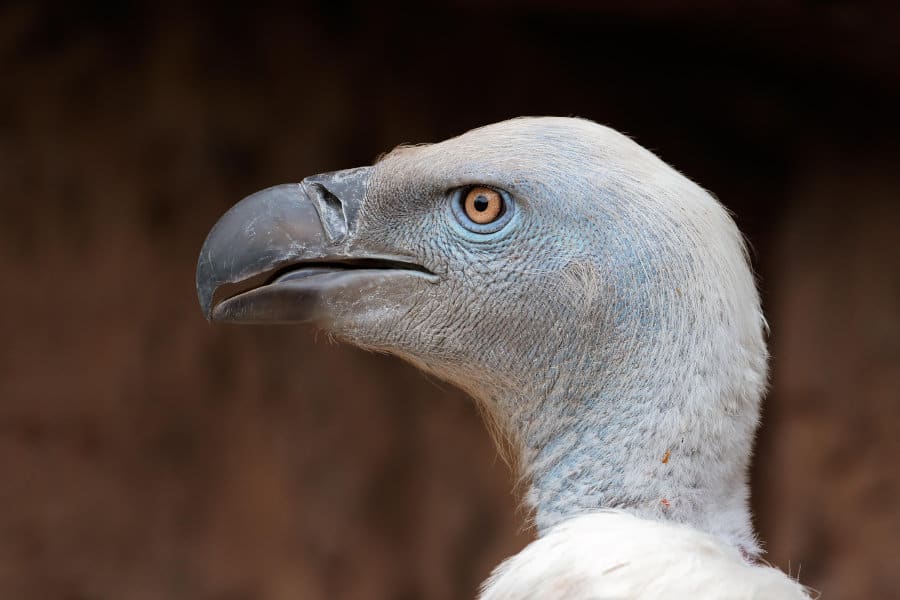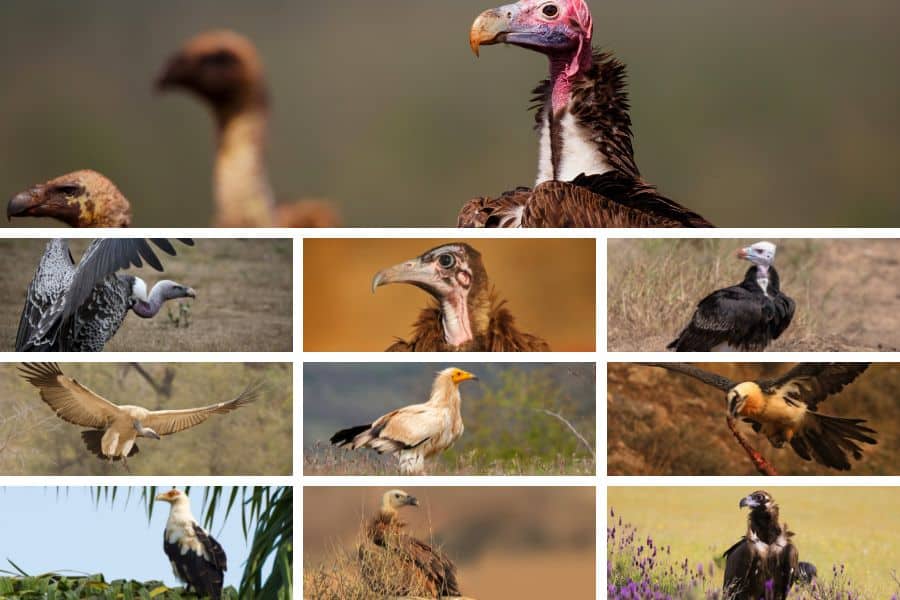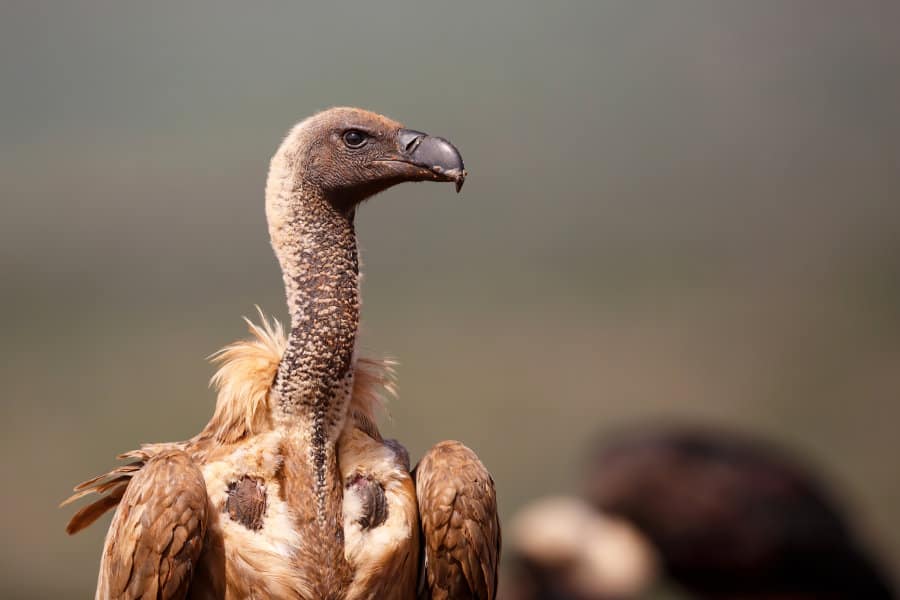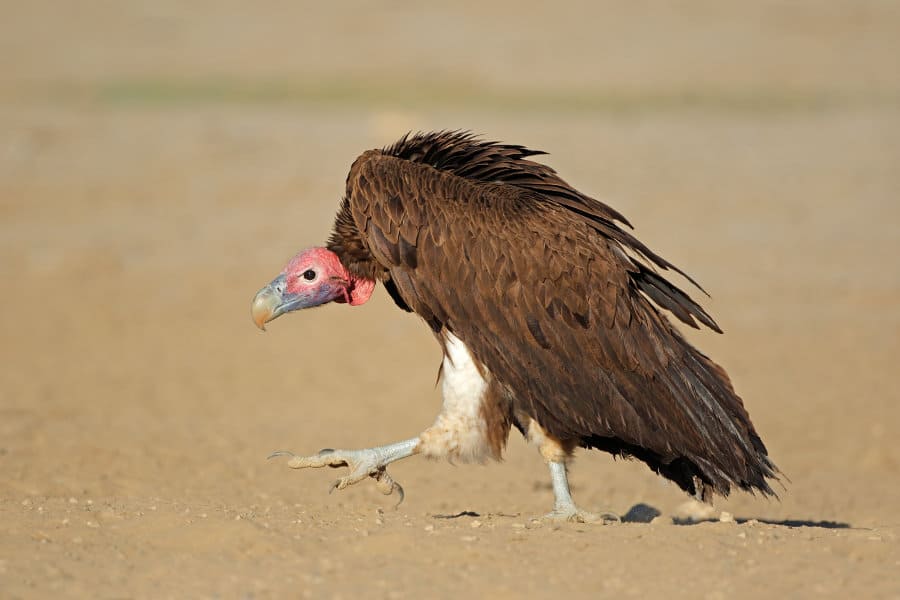The Cape vulture is one of nine species of vultures found in South Africa. This bird is aesthetically striking, while also being particularly intelligent. Though it is often perceived as a lowly scavenger, these birds play a vital role in the environment in which they live.
Vultures are uniquely equipped to keep the environment clean and help prevent the spread of disease. Should these birds disappear, the ecosystem where they occur will go off-balance.
Like the bearded vulture, the Cape vulture’s population is steadily declining. As such, the protection of these birds is important, not only for their own survival, but for other conservation and rewilding goals as well.
This article aims to shine a light on the importance of nature’s cleanup crew.
Cape Griffon Vulture

The African Cape vulture is commonly referred to as the Cape griffon. Like the African white-backed vulture, it is an Old World vulture. Its scientific name is Gyps coprotheres, and is sometimes referred to as “Kolbe’s vulture”.
Cape Vulture Habitat and Distribution
Cape Vultures live in open grasslands and woodlands throughout southern Africa. They are also commonly found on the faces of high cliffs, where they nest. On these cliffs, you will find up to 1000 breeding pairs. Cape vultures are the only vultures in this region to live together in large colonies.
Cape vultures are endemic to southern Africa. Currently, South Africa is home to around 8000 of these birds. Small remnant breeding populations occur in Swaziland, too. There are also several non-breeding groups in Zimbabwe and Namibia.
Cape Vulture Diet

The Cape vulture is a scavenger and feeds mostly on carrion (dead and decaying flesh). Around the carcass, it takes bites of bone fragments, soft muscles and organ tissues. Vultures feed in large groups and each is able to consume 10% of its body weight in a single feeding.
Cape vultures fly in groups for long distances in search of food. They are the highest flying vultures in southern Africa. Flying as high as 8000 meters, they use their keen eyesight in hopes of finding a viable carcass on the ground below.
The diet of the Cape vulture consists of nothing smaller than an antelope. Being able to hold out against jackals and warthogs for food, they are a dominant figure at feeding sites.
After a good meal, these vultures are often seen at an open water source, cleaning and preening themselves.
Cape Vulture Size and Appearance
The Cape vulture is large. Adult birds measure between 96 and 115 cm in length. More impressively, their wingspan expands as wide as 2.6 meters. The species is among the largest raptors on the African continent.
This vulture is the heaviest bird in southern Africa, weighing up to 9 kg. These bulky birds are creamy-white in color, with contrasting dark flight and tail feathers.
One of the Cape vulture’s most outstanding features is its long, unfeathered neck. Along with this, it has deep yellow eyes and a black bill. Juveniles are darker and more streaked, with orangey-brown eyes and pink necks.
Cape Vulture Breeding

As previously mentioned, Cape vultures breed and roost on cliffs in and near mountains. They have no set breeding period but generally mate between April and July.
Cape vultures nest in communities of no less than six pairs. In these nests, the female lays a single egg. Both parents incubate the egg over a period of 57 days.
After hatching, nestling lasts between 125 and 171 days. Vulture chicks depend on their parents for food for up to 221 days. Later, the younger birds form groups to roost and forage a fair distance away from their breeding sites.
Threats and Conservation
Over the past few decades, the Cape vulture population has been steadily declining. Detailed below are some of the vulture’s largest threats, as well as efforts being made to conserve them.
Threats

Cape vultures are “endangered”, as reported by the IUCN (International Union for Conservation of Nature). The global population of this species remaining in the wild is around 9400.
The biggest threats to these birds are ranchers and farmers who poison the carcasses of deceased animals. This is a method used to keep scavenging jackals and leopards, which could attack their livestock, at bay.
Other threats include disturbances to breeding colonies, and electrocution on overhead power lines. Vultures are also caught and used for “muti” or witch doctor medicine. People believe it has medicinal and psychological benefits.
Conservation
While some Cape vultures occur in protected areas, the majority of them are found out in the wild.
The most known actions taken to conserve these birds are by the Birds of Prey Working Group and Wildlife Conflict Prevention Group. These groups regularly conduct awareness and education programs in rural areas.
Despite these efforts, further intervention is still needed.
6 Interesting Vulture Facts

While the Cape vulture is interesting in its own right, vultures as a whole are a rather unique bird species. Below are several vulture facts which are sure to have you thinking.
- A group of vultures is a flock. Interestingly, they are also labelled as a venue, volt, or a committee.
- In total, there are 23 species of vultures. New World vultures (located in the Americas and Caribbean), and Old World vultures (typically found in Africa, Asia and Europe).
- The largest vulture species is the Andean condor. This bird can weigh up to 15 kg and has an impressive wingspan of nearly 3.5 meters.
- Unlike many bird species, vultures cannot sing. Instead, they either grunt or hiss.
- Vultures have extremely strong acids inside their bodies which help them break down the bones they have devoured.
- Vultures urinate on themselves to cool down on warmer days, as well as to disinfect their legs after feeding.
For more information of various vulture species, check out the interesting readings below:
Where Can You See a Cape Vulture?

Cape vultures, large and resilient, are key players in the ecosystems in which they occur. Without them, the wild would be a foul-smelling place, filled with disease and rotting carcasses – so let’s hear it for nature’s unsung heroes!
As the population of these beautiful birds continues to decline, spotting one of them is a real treat. The best places to see these big vultures are the uKhahlamba-Drakensberg Park and De Hoop Nature Reserve. However, they are commonly seen in several other places in South Africa.
So on your next African safari, be sure to keep an eye out for these fascinating creatures.




Amazing info helped me a lot !!!